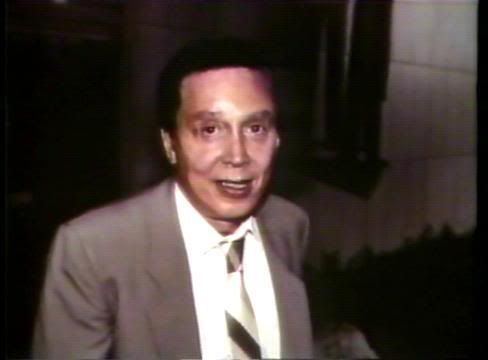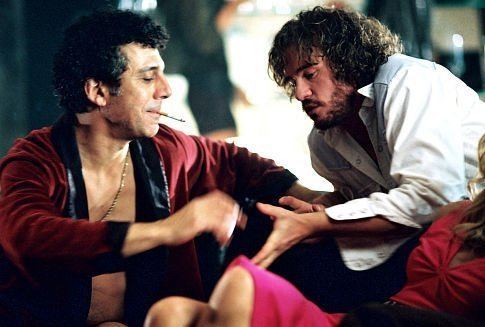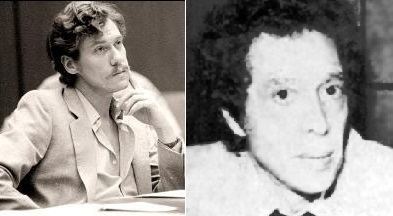Name Eddie Nash | ||
 | ||
Occupation Gangster, drug dealer, nightclub owner Similar People James Cox, John Gil, Paul Thomas Anderson, Burt Reynolds, Julianne Moore | ||
Pov drive from wonderland murder house to eddie nash s house 8am
Eddie Nash (born Adel Gharib Nasrallah in June 1929 ) is a former nightclub and restaurant owner in Los Angeles, as well as a convicted gangster and drug dealer; he is best known as the alleged mastermind of the Wonderland Murders.
Contents
- Pov drive from wonderland murder house to eddie nash s house 8am
- John Holmes and Eddie Nash The Wonderland Murders
- Early life
- Wonderland murders
- Bautista murders
- In films
- In literature
- References
John Holmes and Eddie Nash: The Wonderland Murders
Early life

Born Adel Gharib Nasrallah in British Palestine, Nash claims he left the country because IDF (Israel Defense Forces) soldiers gunned down his brother-in-law and narrowly missed him. His family are Orthodox Christian Palestinians from the city of Ramallah, just outside Jerusalem. In the nonfiction book by John Gilmore, L.A. Despair: A Landscape of Crimes & Bad Times, Gilmore states that Nash told his lawyer he had dreams filled with muzzle flashes and bullets soaring over his head.


Nash said he owned several hotels in 1948, when he was 19 years old. He immigrated to the United States in the early 1950s and developed a limp.

In the U.S., Nash found work as an actor and stuntman, and was an expert horseman. He acted in The Cisco Kid 1952 episode, "The Quarter Horse", as the character "Nash".
He bought several nightclubs in Los Angeles, such as the P.J.'s club (shortly afterward renamed Starwood) in West Hollywood, the Soul'd Out club in Hollywood, the Odyssey disco, the Paradise Ballroom, the Seven Seas, Ali Baba’s, and The Kit Kat strip club. Nash's clubs attracted diverse groups, as he operated clubs marketed towards gays, straights, blacks, whites, and other target audiences.
Wonderland murders
Nash is most notorious for his involvement in the quadruple Wonderland Murders in 1981, the possible retaliation for a robbery of Nash's home perpetrated two days earlier by three to five men. A key player in the incident, porn performer John C. Holmes, was later acquitted of the murders. Nash and Holmes were close friends; Nash enjoyed introducing his countless houseguests to Holmes, who was famous for playing the X-rated movie character "Johnny Wadd."
However, by 1981, Holmes had become desperately addicted to freebasing cocaine, and as a result, his career had declined due to chronic impotence. In order to settle a substantial debt to drug kingpin Ron Launius, leader of the widely feared Wonderland Gang which dominated the LA cocaine trade in 1981, Holmes conspired to invade Nash's home and commit a robbery in which Nash and his bodyguard were brutalized and humiliated.
Two days later, Launius and three other people were found bludgeoned to death at their home at 8763 Wonderland Avenue in Laurel Canyon, Los Angeles. Though Nash had planned to have Holmes killed alongside his Wonderland associates, he later decided to spare Holmes' life and use the Wonderland murders to "teach Holmes a lesson", by having him forcibly witness and allegedly partake, albeit against his will, in the quadruple murders.
Launius, Billy Deverell, Joy Audrey Gold Miller, and Barbara Richardson were murdered, and Susan Launius, Ron's wife, was critically injured. Officials from the Los Angeles Police Department (LAPD) remarked that the scene was bloodier than the Charles Manson instigated Tate/LaBianca murders.
A police search of Nash's home days after the murders revealed a large amount of cocaine. Nash was sentenced to eight years in prison, but a judge released him after just two, purportedly for health reasons. An associate of Nash's later admitted that they had bribed the judge with about $100,000.
In 1990, Nash was tried in state court for having planned the murders; the trial resulted in an 11-1 hung jury. Nash would later admit that he had bribed the lone holdout, a young woman, with $50,000. The retrial ended in an acquittal.
According to John C. Holmes' second wife Laurie (porn name Misty Dawn), in a Playboy magazine interview, "He [Eddie Nash] was an awful man... John told me he used to leave the bathrooms without toilet paper, then offer the young women cocaine if they'd lick his ass clean."
Throughout the 1990s, law enforcement figures continued to hound Nash, who had been referred to in various print media as "the one who got away". In 1995, in a broad series of raids targeting alleged organized crime figures, federal agents armed with search warrants raided Nash's house and confiscated what was thought to be a cache of methamphetamine. To the chagrin of law enforcement, the "meth" turned out to be a cache of mothballs, and no charges were filed against Nash.
In 2000, after a four-year joint investigation involving local and federal authorities, Nash was arrested and indicted on federal charges under the Racketeer Influenced and Corrupt Organizations Act (RICO) for running a drug trafficking and money laundering operation, conspiring to carry out the Wonderland Murders, and bribing one of the jurors of his first trial. Nash, by this point in his seventies, and suffering from emphysema and several other ailments, agreed to a plea bargain agreement in September 2001, pleading guilty to RICO charges and to money laundering. He also admitted to jury tampering (for which the statute of limitations had run out) and to having ordered his associates to retrieve stolen property from the Wonderland house, which might have resulted in violence including murder, but he denied having planned the murders that took place. He also agreed to cooperate with law enforcement authorities. In exchange, he received a four-and-a-half year prison sentence (including time already served) and a $250,000 fine.
Bautista murders
On September 6 or 7, 1984, Nash's former lover Maureen Bautista and her son Telesforo were stabbed to death, by Hells Angels biker Robert Frederick Garceau. Garceau was turned in to the police after he murdered Greg Rambo, who had helped him dispose of the Bautistas' bodies. Rambo's wife, Susan, knew of the Bautista murders and talked to the police (under an agreement of immunity).
During the trial, Susan Rambo testified that Harlyn Codd had told her Nash was Telesforo's father, and that Nash once had paid Garceau to fulfill a contract but that Garceau had failed to perform and, as a result, Nash was "looking for" Garceau. At trial, evidence was presented that Garceau murdered Ms. Bautista because she threatened to expose Garceau's drug operations to Nash, and Garceau killed her son because Telesforo had witnessed Maureen's murder. Garceau was convicted of all three murders and sentenced to death.
A lengthy court appeal of Garceau's death sentence was begun, but in 1993 the California Supreme Court upheld the legality of what became known as "The Nash testimony." Garceau died from cancer on San Quentin's Death Row on December 29, 2004.
